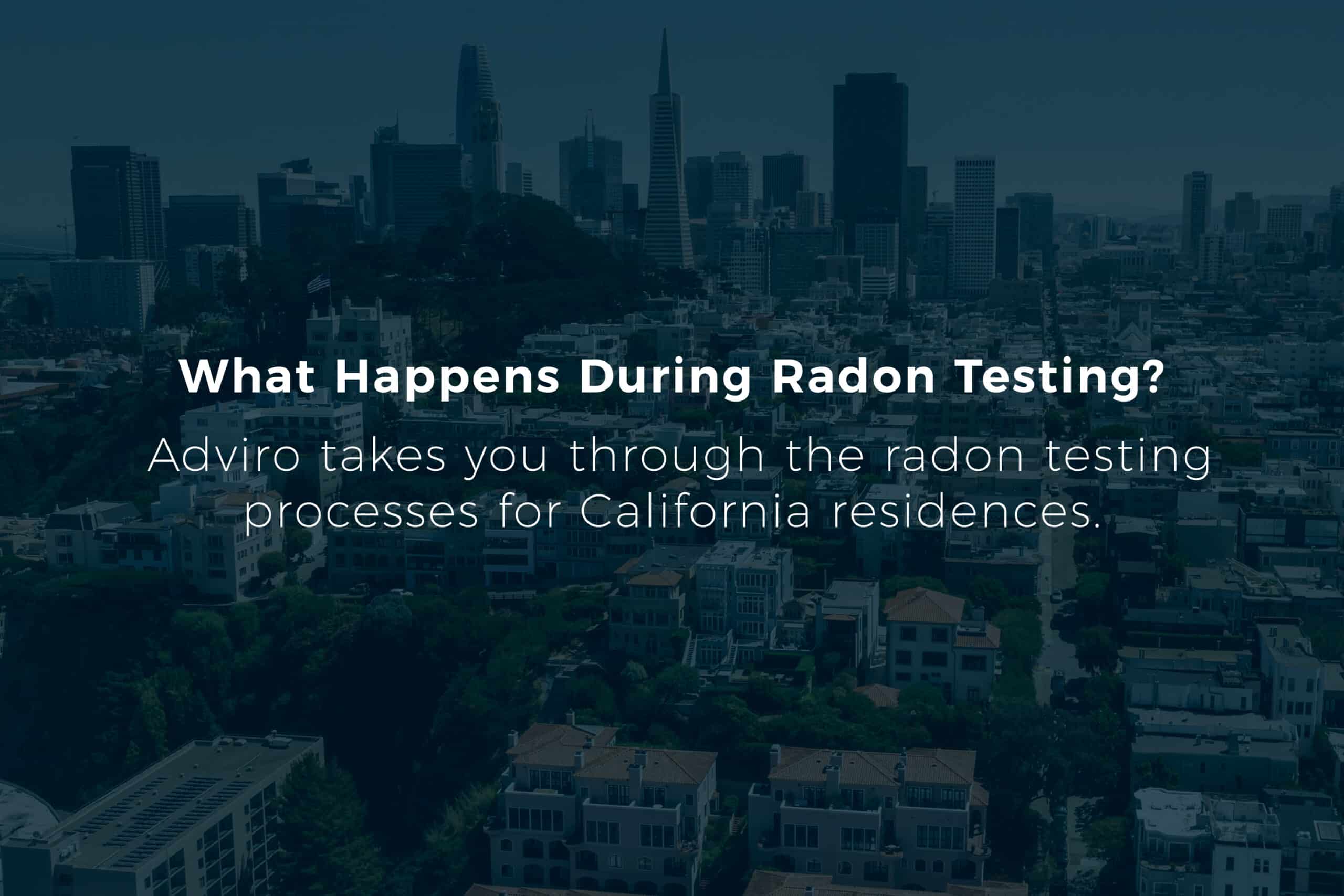
Learn about the radon testing process for a home.
Background Information
Radon is a natural gas that is odorless, invisible, and radioactive. It is released from the ground from different sources such as rocks, soil, and water, and can seep into homes and buildings through small cracks and holes. When this happens, radon can build up in the air indoors and reach high levels that can cause lung cancer. In fact, radon is the second leading cause of cancer in the United States.
In the California real estate market, radon testing and mitigation are not mandatory. However, the US EPA recommends testing the home before putting it on the market. In this blog, we’ll share what happens behind the scenes when our radon technicians conduct the tests in a home.
First, let’s cover what goes into hiring a qualified radon testing expert:
- In California, a radon contractor must achieve certification.
- The contractor must submit a “Radon Certification Verification Form” along with a copy of their certificate to the Indoor Radon Program.
- Radon certification must be obtained by taking qualified third-party courses offered through NRPP or AASRT.
At Adviro, all of our radon technicians have obtained their certification—plus have been trained through our company’s own stringent processes to provide the highest quality and most efficient services possible. In a radon project, Frank Valerga, CAC and Environmental Consultant for Adviro, will often manage the project oversight.
Steps in the Radon Testing Process
1. Prepping the Home for Radon Testing – First, it’s important to make sure that the home is closed (as in ensuring that all windows and doors are shut) for a minimum of 12 hours before our Adviro technician comes over to begin the tests. Keep in mind that normal exit and entry into the home is OK. The general closure of the home allows it to accumulate radon gas so that it’s more detectable.
2. The Testing Process – Once a home has been prepared for the radon testing process, our radon technician will come to the home with a number of radon testing devices. Based on EPA recommendations, we’ll test all homes below the third floor. This is because the bottom two floors are closer to the ground which is where the radon gas will enter the home and accumulate.
3. Placement of Devices – Our radon technician will do a walk-through in the home, assessing the best areas to place the testing devices. The most important rooms to test are those that are used regularly, such as the living room, den and bedroom. We will not test in the kitchen, bathroom, laundry room or hallway.
4. Attention to Details – At Adviro, we focus on the details. Where the radon testing devices are placed within a room is critical to the success of the test. We make sure that the devices are a number of inches above the floor. And, that the device is in a spot that will not be disturbed. We’ll also keep the devices away from high heat, high humidity or exterior walls.
5. Testing Documentation – Our radon technicians are trained to meticulously document the process . They will note both the time and location where each device is placed and keep this record with the client file.
6. Testing Time Period – Depending on which radon monitoring device we use, we’ll leave the devices in the home for a time period ranging from 48 hours to 7 days or more.
7. Collecting the devices – After the designated period of time, our radon technician will come back to gather the devices and collect the data. If test results show a radon level of 4 pCi/L or higher, the EPA recommends fixing the home.
Winter is the Best Time to Test for Radon
For those of you considering testing your home for radon, keep in mind that winter is the ideal time to test. This is because radon—as well as other environmental hazards—tend to accumulate more inside the home due to the closure of windows and doors to keep out the elements.
Our Home Health Checkup Package Tests for Radon and More
Better yet, if you schedule a test now, you can take advantage of our Home Health Check-Up Package which allows you to test for Radon and other hazards with great savings.
Choose from four options:
OPTION #1
• Indoor Air Quality (IAQ)
• Mold Screening (Air)
• VOC Screening (Air)
• Formaldehyde Screening (Air)
• Radon Screening (Air)
OPTION #2
• IAQ + Asbestos:
• Mold Screening (Air)
• VOC Screening (Air)
• Formaldehyde Screening (Air)
• Radon Screening (Air)
• Asbestos Screening (Air and Dust Wipe)
OPTION #3
• IAQ + Lead:
• Mold Screening (Air)
• VOC Screening (Air)
• Formaldehyde Screening (Air)
• Radon Screening (Air)
• Lead Screening (Dust Wipes. Soil and Water)
OPTION #4
• IAQ + Asbestos & Lead:
• Mold Screening (Air)
• VOC Screening (Air) •
• Formaldehyde Screening (Air)
• Radon Screening (Air)
• Asbestos Screening (Air and Dust Wipe)
• Lead Screening (Dust Wipe, Soil and Water)
No matter which affordable bundled package you choose, you’ll also receive an extra 10% off during our Winter Special! Plus, receive the valuable information you need to make informed decisions regarding the health of your indoor air quality. And more importantly, gain greater peace of mind for you and your family.
To learn more, visit Home Health Packages page: https://goadviro.com/home-health-checkup-package/

Recent Comments